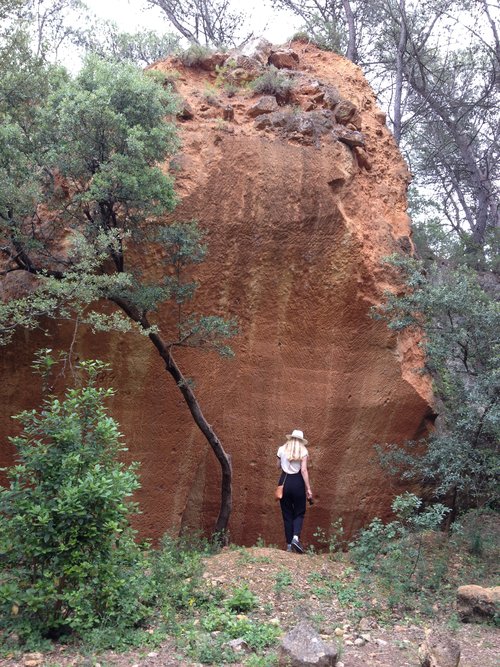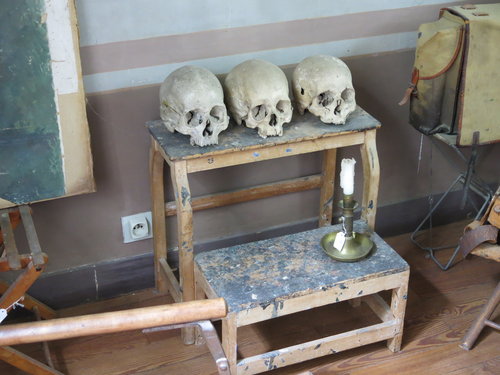The Master of Aix
November 16, 2016
George Orwel, Cohort ’15

“Young Marie has just been in to clean my studio,” the painter Paul Cézanne wrote to his niece, Paule Conil, of L’Atelier des Lauves, where he had everything he needed to compose his famous still lifes. “It’s finished, and I’m moving in bit by bit.”
It was a moving experience walking around Cézanne’s studio last summer with fellow IDSVA students, looking at the fruit-bowls, skulls, wine bottles and plaster cherub standing untouched. A still life of apples and onions, arranged in the folds of a tea-towel, has been carefully reconstructed on the table. The iconic walking stick and the hat which the artist wore come rain or shine, still hang in their usual places. Cézanne’s palette, paint-box, and wooden manikin remain in a corner near an 18th century screen from his parent’s house, Jas de Bouffan. In his L’Atelier des Lauves studio, objects on the floor and table-top appeared as though tipped up against the picture of the plane, a distortion of traditional perspective that prefigures Cubism.
The studio where he had once dreamt of “conquering Paris with an apple” is simple and stripped of all ornamentation reflecting the artist’s need for solitude and silence. It was here, on the outskirts of Aix-en-Provence, that the painter created his unique artistic universe dominated by still lifes of his favorite accessories. It was here that he painted his Baithers, laying the canvas flat on the floor and peering down at it from the top of an unusually tall ladder to inspect progress. Thanks to John Rewald’s passion and admiration for Cézanne, this magical studio has survived intact like a shrine for the artist whose “noble face, framed by a curly beard” recalled the figures of the Assyrian gods.
In the suburb of Aix, lies Bibemus Quarry, where Cézanne mined inspiration to paint his beloved Mount Sainte Victoire at the peak of his career. The quarry has a history of being a supplier of sandstones since the Roman era. The tall, angular, oddly sculpted rocks venture steeply up and out of the undergrowth, a perfect subject for an artist obsessed with essential shapes and colors—shapes as in the spheres, cylinders and cubes; and colors as in orange earth and sandstone, the blue sky and the green pine trees and other vegetation were right for his palette. Unlike other post-impressionists who were concerned with emotions, Cézanne relied on this quarry, the surrounding vegetation, and the mountain and the blue sky on the background. The imaginative beauty of these natural wonders and rural life inspired him as they did to us on that summer day tour. We were told by our tour guide that Cézanne went to Bibemus to paint and explore geometrical form while reworking and altering conventional perspective.

.jpeg)
Indeed, the more I looked around the studio and the quarry, the more I thought of Cézanne, and the more I got the impression of romantic sensibility in his views, and it comes through when you consider his love for unadulterated nature and landscape. We were told he opposed the construction of the first railway in Aix, a symbol of modernity that linked Paris to the provinces, and he preferred to use an ox carriage to move from his family estate Jas de Bouffan to Bibemus, where he spent most of his time painting. He produced canvases that played with structure and perspective.
To understand Cézanne is to admire this magical region in southern France known for its lavender fields, golden sun, and dreamy landscapes that includes Mont Sainte Victoire, the mountain motif steeped in centuries of history and classical folklore which he immortalized in oil paintings and watercolors. Aix, a sleepy provincial town nestled in the south of France, lies at the heart of Cezanne’s painting and philosophy; one that emphasizes interpretation rather than simply recording nature.
.jpeg)
